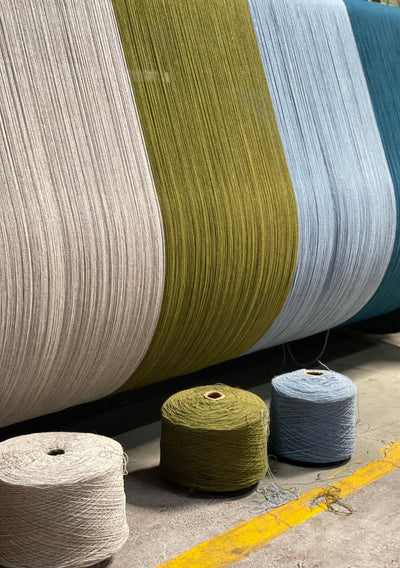Which is better? Wool vs Cotton

Wool and cotton both have their merits. When sourced correctly, both are biodegradable and renewable, making them a sustainable choice for clothing and homeware. So, which is better? Well, that entirely depends.
Which should I wear, wool or cotton?
There are many factors to take into consideration before deciding which fibre is best for you. Are you wanting to be warmer, or cooler? Are you dressing for the day or going to bed?
Hot summer days (and heatwave-clad nights!) call for cotton. The fibres are breathable, so sweat and moisture can be wicked away, making you feel more comfortable and cooler.
Cotton pyjamas are must-have nightwear as they can be worn year-round thanks to the thinner, more porous weave.
Wool is a winter staple. We associate woollen garments and blankets with wrapping up warm in the colder months. Blankets, socks and accessories (think hats and scarves!) are better when made from wool.
Again, wool’s natural fibres are also breathable and moisture-wicking - just like cotton- but tends to provide more insulation than its counterpart.
Is wool warmer than cotton?
Wool itself is a thicker and heavier material than cotton and has temperature-regulating properties.
Thanks to little pockets of air in wool, it traps heat and keeps you warm when it’s cool out.
However, like cotton, wool also has moisture-wicking abilities that can remove water (or sweat, if it’s a hot day) and make a woollen blanket, scarf, or hat less stuffy.

What is the difference between cotton and wool?
Both fibres share many similarities but have a few key differences. Cotton is grown from cotton plants, whereas wool is sheared from the fleece of a sheep.
Cotton is better at withstanding higher temperatures and is more absorbent than wool, making it a great choice for clothing like t-shirts and cotton pyjamas. Think lightness, softness, and smooth fibres for optimal comfort.
Cotton can also be washed more easily than wool as it retains its shape when popped in the washing machine or dryer. Wool fabrics tend to shrink when exposed to really hot temperatures, especially when wet.
Wool is the more durable of the two fibres and can be spun up to 20,000 times before strands break (cotton breaks at around 3,000 bends). Both fabrics are breathable, but wool offers superior comfort during damp and colder weather. Wool is also stain and odour resistant, so any spills can be cleaned quickly and aren’t likely to linger.
Is cotton sustainable?
As with anything, it’s all in the sourcing. Choosing to buy items made from recycled cotton or organic is better for the planet and its people than buying mass-produced cotton. Organic cotton is also grown without any harmful pesticides, making it better for you, too!
Where cotton is supplied from is also a factor in how sustainable it is – do your favourite brands work with fair trade cotton suppliers? Are they FSC certified? Research is key when choosing the best fabric for you.
Cotton is renewable and biodegradable, making it an eco-friendly choice compared to synthetics and man-made materials.































